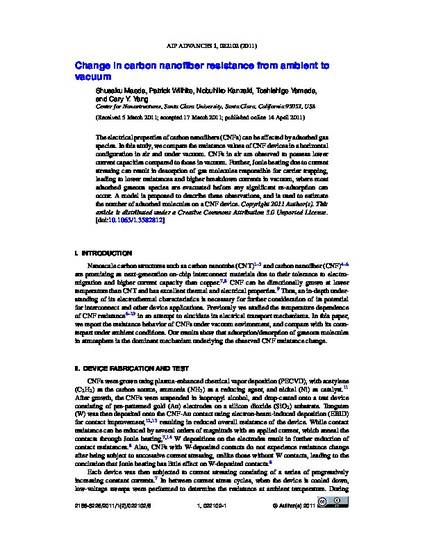
Article
Change in carbon nanofiber resistance from ambient to vacuum
Electrical and Computer Engineering
Document Type
Article
Publication Date
6-1-2011
Publisher
American Institute of Physics Publishing
Disciplines
Abstract
The electrical properties of carbon nanofibers (CNFs) can be affected by adsorbed gas species. In this study, we compare the resistance values of CNF devices in a horizontal configuration in air and under vacuum. CNFs in air are observed to possess lower current capacities compared to those in vacuum. Further, Joule heating due to current stressing can result in desorption of gas molecules responsible for carrier trapping, leading to lower resistances and higher breakdown currents in vacuum, where most adsorbed gaseous species are evacuated before any significant re-adsorption can occur. A model is proposed to describe these observations, and is used to estimate the number of adsorbed molecules on a CNF device.
Citation Information
S. Maeda, P. Wilhite, N. Kanzaki, T. Yamada, and C.Y. Yang, "Change in carbon nanofiber resistance from ambient to vacuum," AIP Advances 1, 022102 (1-6) (2011). https://doi.org/10.1063/1.3582812

Copyright © 2011 American Institute of Physics Publishing. Reprinted with permission.